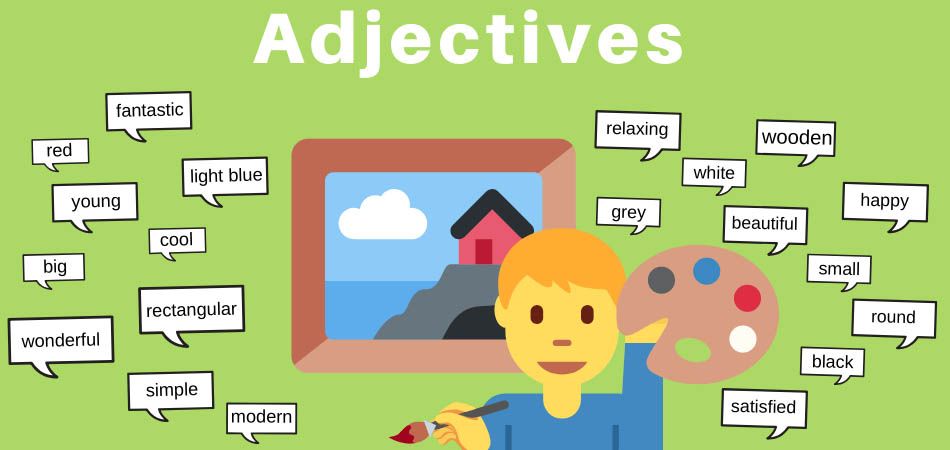COMPARATIVE AND SUPERLATIVE ADJECTIVES

Comparative and superlative adjectives are used to compare one or more nouns to each other, showing differences in degree or quality.
Content
Comparative Adjectives
- Definition: Comparative adjectives are used to compare two things. They show that one thing has a higher or lower degree of a certain quality than another.
- How They’re Formed:
- For short adjectives (one syllable or two syllables ending in -y), add
-erto the end of the adjective.- Example: Tall becomes taller.
- Example: Happy becomes happier.
- For longer adjectives (two or more syllables), use “more” before the adjective.
- Example: Beautiful becomes more beautiful.
- For short adjectives (one syllable or two syllables ending in -y), add
- Examples:
- John is taller than Mark. (comparison between two people)
- This book is more interesting than that one. (comparison between two books)
Superlative Adjectives
- Definition: Superlative adjectives are used to compare three or more things. They show that one thing has the highest or lowest degree of a certain quality among a group.
- How They’re Formed:
- For short adjectives (one syllable or two syllables ending in -y), add
-estto the end of the adjective.- Example: Tall becomes tallest.
- Example: Happy becomes happiest.
- For longer adjectives, use “most” before the adjective.
- Example: Beautiful becomes most beautiful.
- For short adjectives (one syllable or two syllables ending in -y), add
- Examples:
- John is the tallest in the class. (comparison among all the students)
- This is the most interesting book I’ve ever read. (comparison among all books read)
Be aware that there are exceptions to these rules:
1. Some two-syllable adjectives that can use either “-er/-est” or “more/most” (both are considered correct):
- clever → cleverer / more clever
- quiet → quieter / more quiet
- narrow → narrower / more narrow
- simple → simpler / more simple
- subtle → subtler / more subtle
2. Irregular forms that don’t follow either pattern (e.g., good/bad/far).
- good → better / best
- bad → worse / worst
- far → farther / farthest (or further / furthest)
3. Vowel + y: if an adjective ends in vowel + y (e.g., grey/gray), we usually do not change the y to i. Instead, we add -er or -est directly:
- grey → greyer/greyest
Key Rules to Remember
- Spelling Changes:
- If the adjective ends in -y, change the y to i before adding -er or -est.
- Happy → Happier → Happiest
- If the adjective is short and ends with a consonant-vowel-consonant (CVC) pattern, double the final consonant before adding -er or -est.
- Big → Bigger → Biggest
- If the adjective ends in -y, change the y to i before adding -er or -est.
- Irregular Adjectives:
- Some adjectives have irregular comparative and superlative forms and don’t follow the usual rules.
- Good → Better → Best
- Bad → Worse → Worst
- Some adjectives have irregular comparative and superlative forms and don’t follow the usual rules.

HOWEVER, remember that there are exceptions, and not all adjectives follow these rules.
Usage
- Use comparative adjectives to compare two items, often with “than”:
- This chair is more comfortable than that one.
- Use superlative adjectives to show the extreme or highest quality in a group:
- She is the smartest student in the class.
Understanding comparative and superlative adjectives helps in describing differences and extremes, making comparisons clear and effective.
Learning Activities
Adjective Relay Race
The class will be divided into teams. One by one, the members of each team must run from the start of the line to the other end, where there will be a list of adjectives for each team. They must pick an adjective, and write the correct comparative and superlative forms on a board before running back to tag the next teammate. The first team to correctly complete all their adjectives wins.
Superlative and Comparative Scavenger Hunt
You will be given a list of items/people with certain characteristics (e.g., “someone taller than you,” “the smallest shoe in the room”). Everyone must search the classroom for these items and describe them using the appropriate comparative or superlative adjective. For example, “This shoe was the smallest one I could find.”. Whoever finishes their list first wins.
Comparative and Superlative Adjective Storytelling
You will work in small groups to create a short story or dialogue that uses a list of comparative and superlative adjectives provided by the teacher. For example, “Once upon a time, in the tallest tower in the kingdom, there lived the bravest knight…” Every group will then share their stories with the class and the most creative one will win Krugs for the creators.
